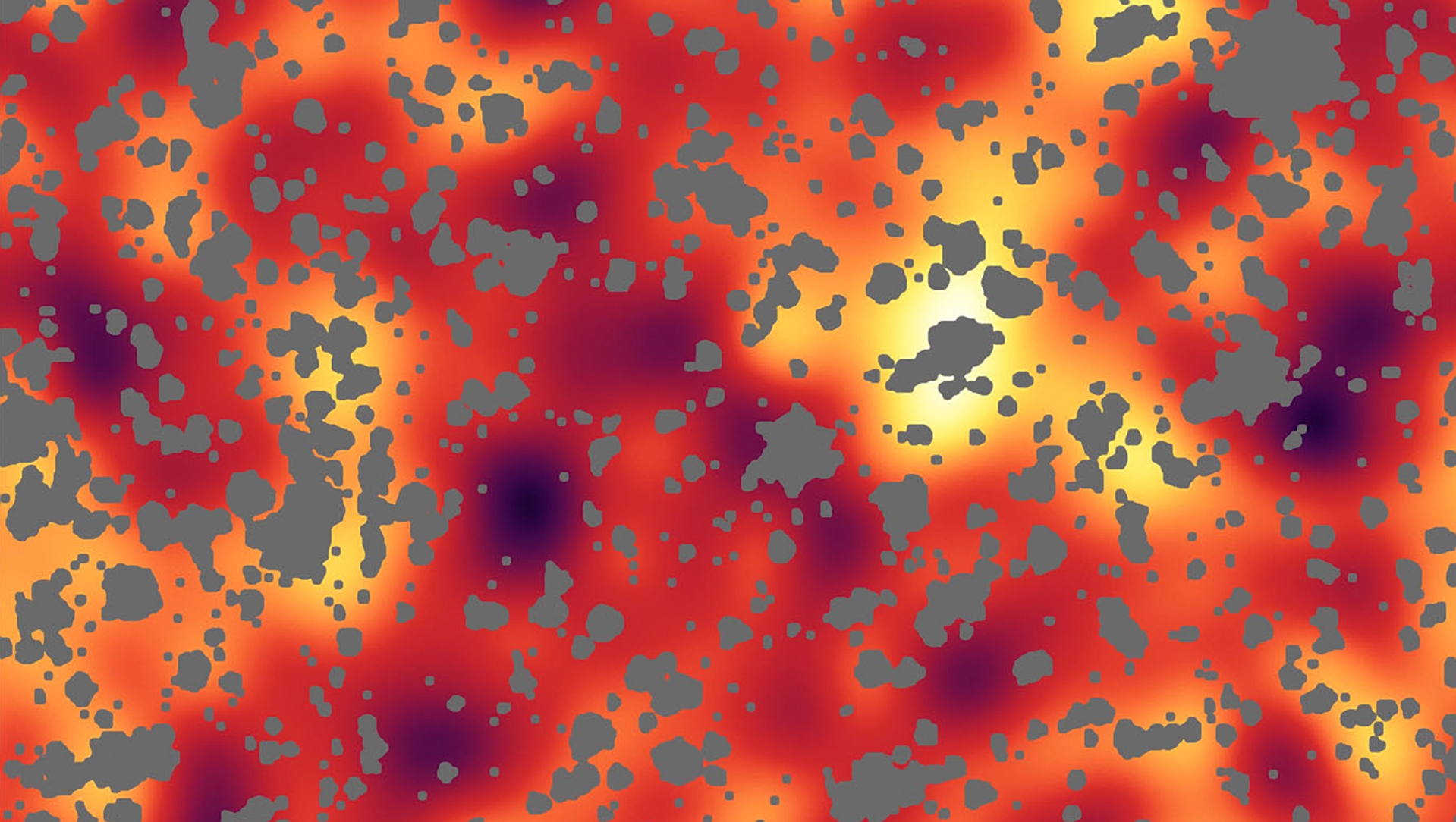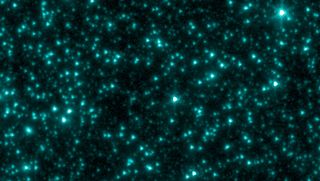Dark Matter May Be Made of Primordial Black Holes

Could dark matter — the elusive substance that composes most of the material universe — be made of black holes? Some astronomers are beginning to think this tantalizing possibility is more and more likely.
Alexander Kashlinsky, an astronomer at the NASA Goddard Space Flight Center in Maryland, thinks that black holes that formed soon after the Big Bang can perfectly explain the observations of gravitational waves, or ripples in space-time, made by the Laser Interferometer Gravitational-Wave Observatory (LIGO) last year, as well as previous observations of the early universe.
If Kashlinsky is correct, then dark matter might be composed of these primordial black holes, all galaxies might be embedded within a vast sphere of black holes, and the early universe might have evolved differently than scientists had thought. [Watch the LIGO documentary "LIGO, A Passion for Understanding"]
In 2005, Kashlinsky and his colleagues used NASA's Spitzer Space Telescope to explore the background glow of infrared light found in the universe. Because light from cosmic objects takes a finite amount of time to travel through space, astronomers on Earth see distant objects the way those objects looked in the past. Kashlinsky and his group wanted to look toward the early universe, beyond where telescopes can pick up individual galaxies.
"Suppose you look at New York [City] from afar," Kashlinsky told Space.com. "You cannot see individual lampposts or buildings, but you can see this cumulative diffuse light that they produce."
When the researchers removed all of the light from the known galaxies throughout the universe, they could still detect excess light — the background glow from the first sources to illuminate the universe more than 13 billion years ago.
Then, in 2013, Kashlinsky and his colleagues used NASA's Chandra X-ray Observatory to explore the background glow in a different part of the electromagnetic spectrum: X-rays. To their surprise, the patterns within the infrared background perfectly matched the patterns within the X-ray background.
Get the Space.com Newsletter
Breaking space news, the latest updates on rocket launches, skywatching events and more!
"And the only sources that would be able to produce this in both infrared and X-rays are black holes," Kashlinsky said. "It never crossed my mind at that time that these could be primordial black holes."
Then, there was the LIGO detection. On Sept. 14, 2015, the observatory made the first-ever direct detection of gravitational waves — cosmic ripples in the fabric of space-time itself — that had been produced by a pair of colliding black holes. It marked the beginning of a new era of discovery — one in which astronomers could collect these unique signals created by powerful astronomical events and, for the first time, directly detect black holes (as opposed to seeing the illuminated material around black holes).
But Simeon Bird, an astronomer at Johns Hopkins University, speculated that the discovery could be even more significant. Bird suggested that the two black holes detected by LIGO could be primordial.

Primordial black holes aren't formed from the collapse of a dead star (the more commonly-known mechanism for black hole formation that takes place relatively late in the universe's history). Instead, primordial black holes formed soon after the Big Bang when sound waves radiated throughout the universe. Areas where those sound waves are densest could have collapsed to form the black holes.
If that thought makes your head spin a little, just think about spinning pizza dough into a disc. "After a while, you will notice it has these holes in the texture of the pizza dough," Kashlinsky said. "It's the same with space-time," except those holes are primordial black holes.
For now, these primordial black holes remain hypothetical. But Kashlinsky, impressed by Bird's suggestion, took the hypothesis a step further. In his new paper, published May 24 in The Astrophysical Journal Letters, Kashlinsky looked at the consequences that these primordial black holes would have had on the evolution of the cosmos. (Bird is not the first scientist to suggest that dark matter might be made of black holes, although not all of those ideas involve primordial black holes.)
For the first 500 million years of the universe's history, dark matter collapsed into clumps called halos, which provided the gravitational seeds that would later enable matter to accumulate and form the first stars and galaxies, Kashlinsky said. But if that dark matter was composed of primordial black holes, this process would have created far more halos.
Kashlinsky thinks this process could explain both the excess cosmic infrared background and the excess cosmic X-ray background that he and his colleagues observed several years ago.
The infrared glow would come from the earliest stars that formed within the halos. Although stars radiate optical and ultraviolet light, the expansion of the universe naturally stretches that light so that the first stars will appear, to astronomers on Earth, to give off an infrared light. Even without the extra halos, early stars could generate an infrared glow, but not to the extent that Kashlinsky and his colleagues observed, he said.
The gas that created those stars would also have fallen onto the primordial black holes, heating up to high enough temperatures that it would have sparked X-rays. While the cosmic infrared background can be explained — albeit to a lesser extent — without the addition of primordial black holes, the cosmic x-ray background cannot. The primordial black holes connect the two observations together.
"Everything fits together remarkably well," Kashlinsky said.
Occasionally, those primordial black holes would have come close enough to start orbiting each other (what's known as a binary system). Over time, those two black holes would spiral together and radiate gravitational waves, potentially like the ones detected by LIGO. But more observations of black holes are needed to determine if these objects are primordial, or formed later in the universe's history.
Follow Shannon Hall on Twitter @ShannonWHall. Follow us @Spacedotcom, Facebook and Google+. Original article on Space.com.
Join our Space Forums to keep talking space on the latest missions, night sky and more! And if you have a news tip, correction or comment, let us know at: community@space.com.

Shannon Hall is an award-winning freelance science journalist, who specializes in writing about astronomy, geology and the environment. Her work has appeared in The New York Times, Scientific American, National Geographic, Nature, Quanta and elsewhere. A constant nomad, she has lived in a Buddhist temple in Thailand, slept under the stars in the Sahara and reported several stories aboard an icebreaker near the North Pole.